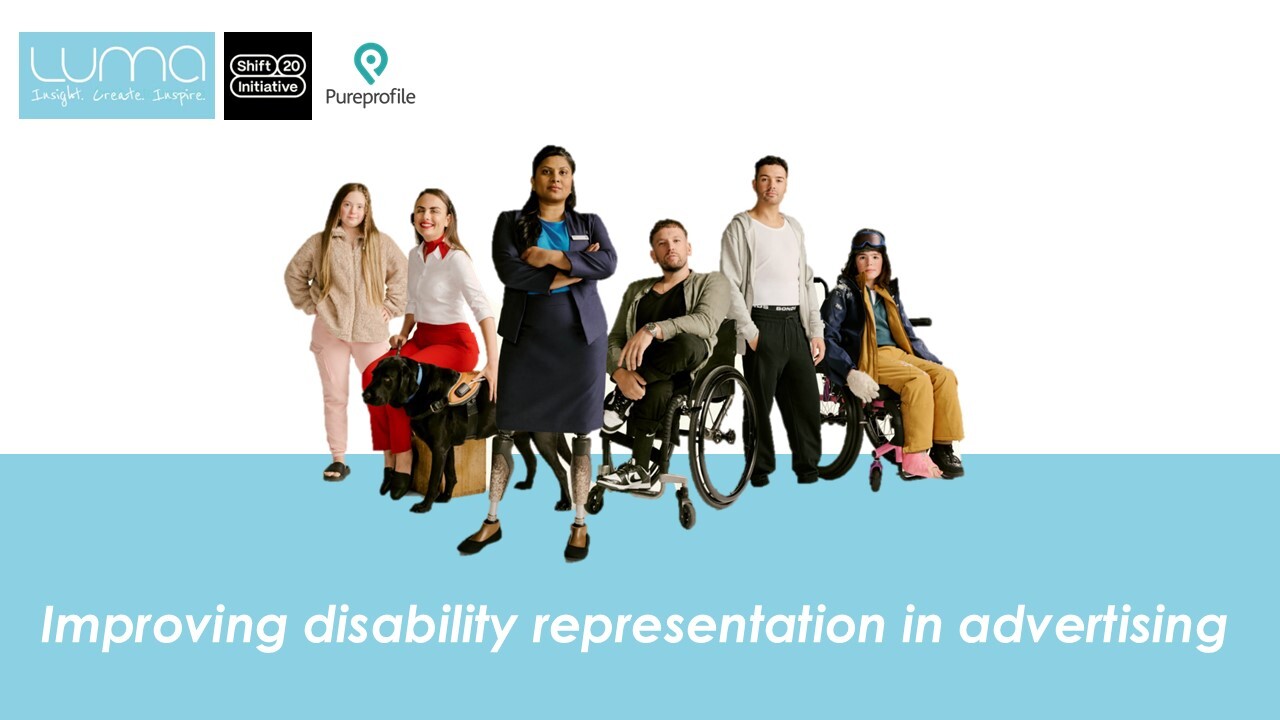The 5 Ad Insights of Christmas!

People are more likely to trust brands that show diversity in their advertising. Including people with diverse backgrounds, abilities and genders in ads has become increasingly important and helps create a sense of belonging and acceptance. By highlighting the significance of diversity in advertising representation, brands can foster a more inclusive and accepting society while also benefiting from increased consumer engagement and loyalty. Here at Luma we are passionate about helping brands achieve this and so continually investigating people’s perceptions. What can we learn from the brands that are doing this well?
Dove is well-known as a brand for championing diversity and has been doing it for many years. The My Beauty My Say campaign in 2016 showcased women of various backgrounds and ages to celebrate people’s individuality and give people a platform to speak out against beauty limits. At the time, the ad generated positive word-of-mouth and social media buzz, and the brand was praised for its inclusivity and the authentic feel of the campaign.
Of the 35 ads we tested from this year’s Super Bowl, 89% had a diverse cast of ethnicities, ages and genders. Yet only 46% of viewers said they feel that current ads represent the diversity of the American population and that they want to see campaigns that highlight inclusivity. But how do we create authentic ads that resonate with people?
Dove continued their leadership in this area in the Super Bowl this year. Using data about girls dropping out of sports and their partnership with Nike they created one of the most effective ads. The ad is authentic, genuine and engaging.
In Australia, we are seeing that just over half feel that the current ads represent all Australians. Featuring diverse individuals helps brands appeal to different consumer segments and expand their customer base particularly those who may have felt excluded or underrepresented in traditional advertising. Last Christmas, Australia Post nailed its casting with Santa interning at Australia Post and featuring people from all ages, races and genders.
While it is important to represent a variety of backgrounds and identities, it is equally important to ensure that the representation is authentic and respectful. Consumers have become more critical of brands hopping on social trends without engaging with their audience meaningfully. Brands now have the responsibility to avoid stereotypes and tokenism and strive for genuine and meaningful inclusion.
One of the ads which was seen to have the most appropriate and likeable casting was Google Pixel’s Javier in Frame, which showcases the phone’s AI functions for people with low vision. The hero of the ad is vision impaired and the ad shows us his life through his eyes. One of the reasons this ad works so well is because of this genuineness that connects with the audience.
Creating effective and inclusive casting strategies in advertising requires careful consideration and planning. Here are some tips to help brands embrace diversity in their casting:
- Conduct research and audience analysis to understand the demographics and preferences of the target audience. This will help in selecting the most relevant and relatable cast.
- Collaborate with diverse talent agencies and casting directors who specialise in representing individuals from different backgrounds and identities. They can provide valuable insights and connections to diverse talent.
- Ensure that diversity is represented authentically and respectfully. Avoid stereotypes and tokenism, and prioritise genuine inclusion.
- Involve diverse voices in the creative process. Seek input and feedback from individuals who can provide diverse perspectives and insights.
- Continuously evaluate and evolve casting strategies. Stay updated on cultural shifts and changes in societal norms to ensure that casting choices remain relevant and inclusive.
By following these tips, brands can create advertising campaigns with inclusive casting that resonate with the audience and contribute to a more diverse media landscape.
From the blog



effective advertising, Australian Ads, Insights, Pandemic, ad casting, add+impact, 2025, disability
The most audacious experiment ever undertaken by the Advertising Industry
Five things you must know to improve representation of disability in your ads
Did you know that people with disability make up over 20% of the population and have global spending power of over 8 Trillion US Dollars? But only 1%...